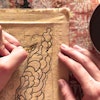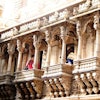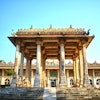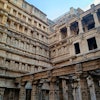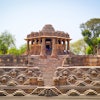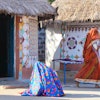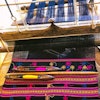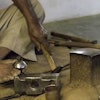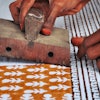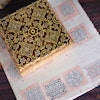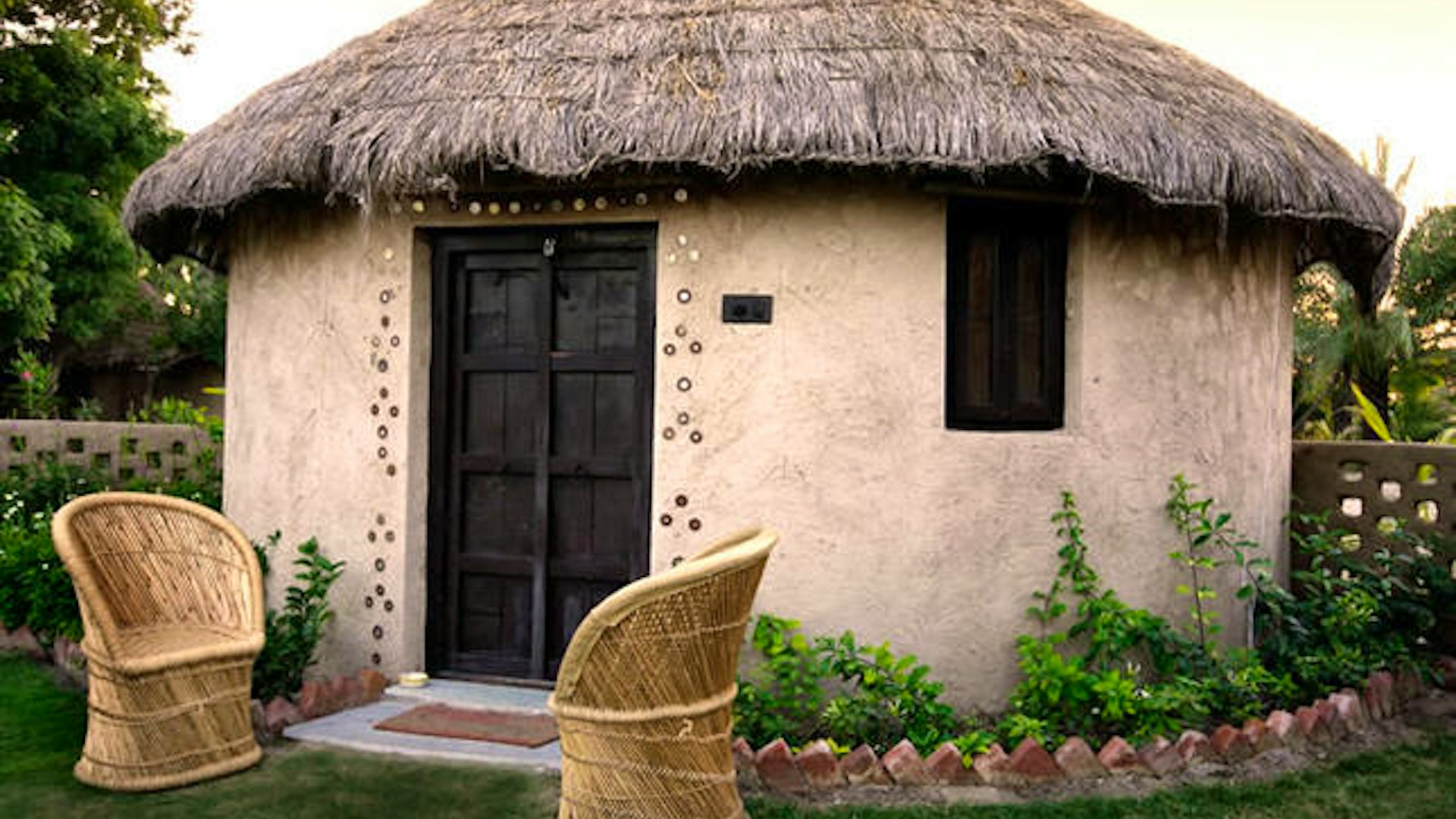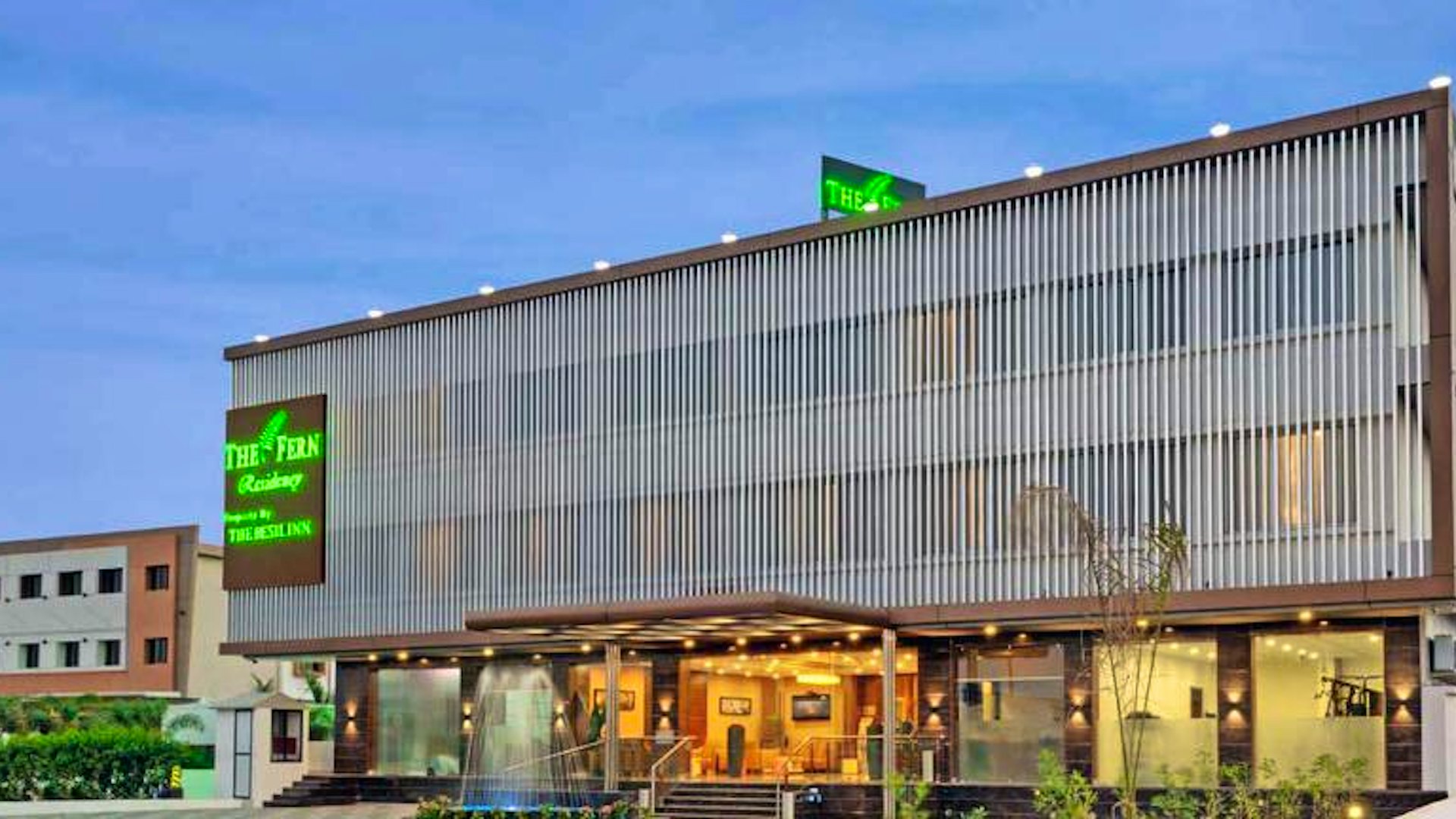Filter Holidays
Find your
next holiday
Filter
Holidays
Sign Up to Emails
Subscribe to our email newsletter and find out the latest news, updates and offers first!
Textile Treasures of Gujarat
13 days from £4,365pp
Holiday Overview
The traditions of Indian textile crafts are some of oldest and diverse in the world. Gujarat has a rich cultural history, and the state produces a wide range of textiles that are intricately linked to its past. Get off the beaten track and experience authentic India as you join Karin Hellaby on a discovery of the textiles and crafts of Gujarat, seeing examples of local craftsmanship in embroidery, block printing, tie-dye, weaving and more. Participate in textile workshops with the locals and enjoy hand-stitching workshops with Karin. There will be plenty of sightseeing too, as we admire spectacular architecture, venture into the wilderness of Little Rann of Kutch’s Wild Ass Sanctuary on a jeep safari, and wander through Ahmedabad’s Old Quarter – plus much more!
Itinerary
Please choose your preferred 13 or 15 day itinerary
Please Note: This 13-day itinerary is for the join direct package, which excludes flights. The 15-day package, with flights included from London to Ahmedabad with 1 piece of checked-in luggage, is available at an additional cost.
Workshop Information: The project for this tour is inspired by the gorgeous braids found all over Gujarat. These irresistible embroidered, woven and beaded trims will be used to embellish a pouch or cushion.
With our join direct package, meet us at the hotel today.
Included Meals
- Lunch
- Dinner
Ahmedabad is the largest city in the state of Gujarat. It has been shaped by both Hindu and Islamic traditions, which can be seen within its architecture, crafts, religious monuments and cuisine. This morning we will start our day with a Heritage Walk in the city. Wander through the Old Quarter, explore the old bazaars, capture the traditional heritage houses and architecture and visit the 19th century Swaminarayan temple and Juma Mosque.
The day continues with a visit to the Calico Museum of Textiles, home to an outstanding collection of Indian fabrics and textiles.
Included Meals
- Breakfast
- Lunch
- Dinner
Highlights
- Calico Museum of Textiles
- Ahmedabad Heritage Walk
- Ahmedabad
Today we will participate in a Kalamkari workshop, an ancient style of hand painting done on cotton or silk fabric, also known as Mata ni Pachedi. The Mata ni Pachedi textiles capture various valued symbols and beliefs on a piece of cloth. Continue to Ghandi’s Ashram, one of the many residences of Mahatma Gandhi. It was from here that Gandhi led the Dandi March, on 12 March 1930. In recognition of the significant influence that this march had on the Indian independence movement, the Indian government has established the ashram as a national monument
This afternoon we will return to the hotel and enjoy our first workshop with Karin.
Included Meals
- Breakfast
- Lunch
- Dinner
Highlights
- Workshop
- Mata ni Pachedi Workshop
- Ghandi’s Ashram
Set on the edge of the Little Rann of Kutch, the sleepy village of Dasada is a renowned bird watching destination bound by the Dasada Wildlife Sanctuary. Today we start our journey to Dasada, visiting a number of places en-route. Our first stop is Rani Ki Vav, an historical landmark approximately 3 hours from Ahmedabad in the town of Patan. This magnificent stepwell is designed as an inverted temple and adorned with 1,500 sculptures. The masterpiece of architecture is the only stepwell to be declared a UNESCO World Heritage Site.
After admiring the stepwell we will continue to Patan’s Patola Museum, ran by the Salvi family. Here we can witness Patola silk weaving in action as we watch a demonstration on the loom.
Our day continues to the Modhera Sun Temple, a Hindu temple in the village of Modhera. This temple was built from 1026 to 1072 CE and is a spectacular example of Salanki architecture. Admire the intricate stone carvings.
Later today we check into our resort Rann Riders in Dasada.
Journey time: 5 hours
Included Meals
- Breakfast
- Lunch
- Dinner
Highlights
- Patan’s Patola Museum with Loom Demonstration
- Rani Ki Vav
- Sun Temple
Today we will enjoy a jeep safari at the Wild Ass Sanctuary, home to the last of the Indian wild ass and the largest wildlife sanctuary in India. During our safari, we will see other kinds of wildlife including wolves, desert foxes, jackals, antelopes and birds.
We will return to the hotel for lunch before visiting a nearby village to see Kharapati Rabari embroidery. Rabari or ‘Rahabari’ means one who lives outside, and many of these communities live in circular huts known as ‘Bhunga’. Although they are a cattle rearing community, they also engage in embroidery; the men tend to work with leather whilst the women embroider garments and accessories. The different communities of Rabaris can be identified from the type and placement of embroidery on their odhanis, veils for head and shoulders. Rabari embroidery is characterised by chain stitches and a generous use of mirrors and the only material used is a simple needle and thread.
Included Meals
- Breakfast
- Lunch
- Dinner
Highlights
- Kharapati Rabari Embroidery
- Wild Ass Sanctuary
Today we will travel to Bhuj, a historical town known for its picturesque lake and ornately decorated houses. This town also features an array of ancient temples and palaces, including the magnificent white Shree Swaminarayan Temple, the Gothic-style Prag Mahal Palace and Aina Mahal, an 18th-century palace covered with mirrors and pieces of Venetian glass. It is an excellent place to exploring the surrounding villages known for their traditional handicrafts.
We will stop during the journey for lunch at a local restaurant and, later today, when we arrive into Bhuj, you’ll have time at leisure to explore the town.
Journey time: 5-6 hours
Included Meals
- Breakfast
- Lunch
- Dinner
Highlights
- Bhuj
This morning we will visit a local artisan’s studio and learn about Bandhani, an expression used to describe textiles designed using a tie and dye technique where a plain fabric is tied tightly using thread in multiple locations prior to dyeing. This results in simple or complex patterns consisting of dots, squares, waves or stripes.
We will then stop for lunch at a local restaurant before heading to the village of Bhujodi, one of the major textile and craft hubs of the region. A large part of the Vankar community resides here and today we will visit Vankar Nanji Bhimaji, one of the traditional woollen and silk shawl weavers of the village. The demand for shawls has increased and not only do they sell products to some of India’s stores, but they also ship abroad to France and Italy. These shawls are popular due to their sustainable process from using natural dyes and creation of the shawls entirely by hand.
Our day continues in Bhujodi as we see some more Rabari embroidery before returning to our hotel in Bhuj for the evening.
Included Meals
- Breakfast
- Lunch
- Dinner
Highlights
- Vankar Nanji Bhimaji
- Local Bandhani Studio
- Bhujodi
Today we will participate in an embroidery workshop at Kala Raksha. This is a famous textile NGO with a focus on different art work with the use of embroidery. Kala Raksha’s emphasis has been on empowering women in the region by developing their skills in textile handicrafts.
Later in the afternoon we will enjoy a workshop with Karin.
Included Meals
- Breakfast
- Lunch
- Dinner
Highlights
- Workshop
- Kala Raksha Workshop
Nirona village is famous for the making of copper bells. This morning, we will visit and experience the skill-intensive process of tuning the bells. After, we visit Abduk Gafar Khatri, who belongs to the last remaining family of Rogan artisans, and watch him use a metal stick and some castor-oil based colours to create vivid compositions.
Journey time: 1 hour
Included Meals
- Breakfast
- Lunch
- Dinner
Highlights
- Abduk Gafar Khatri Visit
- Nirona
This morning we will travel to Ajrakhpur, a village in the Kutch district of Gujarat. Here we will see the age-old tradition Ajrakh, a unique form of hand block printing. Block printing is an ancient Indian textile tradition that has been kept alive in villages, and to this day provides a sustainable livelihood to the local families. The wood-blocks are hand-carved in elaborate designs and each colour is printed with a different block to complete the motif, with as many as 16 blocks to create a five colour design. Each piece of fabric is hand-dyed, block-printed and finished at Real Handicrafts Ajrakhpur. The textiles are treated with vegetable and mineral colours and used extensively on shawls and bedsheets. Every piece is unique.
After lunch, we visit the Living and Learning Design Centre in Ajrakhpur, a pioneering new effort of the Shrujan Trust to preserve, revitalise and promote the wonderful craft heritage of Kutch. The galleries here highlight the variety of crafts – from textiles, pottery and stone craft.
Included Meals
- Breakfast
- Lunch
- Dinner
Highlights
- Ajrakhpur
- Living and Learning Design Centre
- Ajrakh
Today we return to Ahmedabad. The long drive will include a number of stops to stretch our legs. This evening we arrive back at the House of MG hotel.
Journey time: 6-7 hours
Included Meals
- Breakfast
- Lunch
- Dinner
Highlights
- Ahmedabad
This morning, we drive to Pethapur village and witness the making of the Wooden Blocks that are used for the block printing seen previously.
After lunch, return to Ahmedabad and enjoy a workshop at the hotel with Karin.
Included Meals
- Breakfast
- Lunch
- Dinner
Highlights
- Workshop
- Pethapur
On our last day in India, we will visit Shreyas Folk Museum, a tribute to the indefatigable spirit of the Gujarati women who have added remarkable value to the Gujarati heritage with their soulful crafts and imagination. Displayed here is the art from various communities such as Kathi, Rabari, Ahir, Mer, Kandi, Vania and more. As you explore the museum, admire the colourful works of embroidery, wood carving, bead work, costumes and paintings.
This afternoon, we will have time to relax.
If you have booked our join direct package, your tour ends today.
Included Meals
- Breakfast
Highlights
- Shreyas Folk Museum
Please Note: This 15-day itinerary is for the flight-inclusive package which is available at an additional cost. Flights from London to Ahmedabad with 1 piece of checked-in luggage are included.
Workshop Information: The project for this tour is inspired by the gorgeous braids found all over Gujarat. These irresistible embroidered, woven and beaded trims will be used to embellish a pouch or cushion.
With our flight-inclusive package, meet Karin Hellaby and your Tour Manager at London airport for your overnight flight to Ahmedabad.
With our flight inclusive package, this morning arrive into Ahmedabad and transfer to your hotel. Enjoy a welcome lunch and the rest of the afternoon at leisure.
If you have booked our join direct package, meet us at the hotel today.
Included Meals
- Lunch
- Dinner
Ahmedabad is the largest city in the state of Gujarat. It has been shaped by both Hindu and Islamic traditions, which can be seen within its architecture, crafts, religious monuments and cuisine. This morning we will start our day with a Heritage Walk in the city. Wander through the Old Quarter, explore the old bazaars, capture the traditional heritage houses and architecture and visit the 19th century Swaminarayan temple and Juma Mosque.
The day continues with a visit to the Calico Museum of Textiles, home to an outstanding collection of Indian fabrics and textiles.
Included Meals
- Breakfast
- Lunch
- Dinner
Highlights
- Calico Museum of Textiles
- Ahmedabad Heritage Walk
- Ahmedabad
Today we will participate in a Kalamkari workshop, an ancient style of hand painting done on cotton or silk fabric, also known as Mata ni Pachedi. The Mata ni Pachedi textiles capture various valued symbols and beliefs on a piece of cloth. Continue to Ghandi’s Ashram, one of the many residences of Mahatma Gandhi. It was from here that Gandhi led the Dandi March, on 12 March 1930. In recognition of the significant influence that this march had on the Indian independence movement, the Indian government has established the ashram as a national monument
This afternoon we will return to the hotel and enjoy our first workshop with Karin.
Included Meals
- Breakfast
- Lunch
- Dinner
Highlights
- Workshop
- Mata ni Pachedi Workshop
Set on the edge of the Little Rann of Kutch, the sleepy village of Dasada is a renowned bird watching destination bound by the Dasada Wildlife Sanctuary. Today we start our journey to Dasada, visiting a number of places en-route. Our first stop is Rani Ki Vav, an historical landmark approximately 3 hours from Ahmedabad in the town of Patan. This magnificent stepwell is designed as an inverted temple and adorned with 1,500 sculptures. The masterpiece of architecture is the only stepwell to be declared a UNESCO World Heritage Site.
After admiring the stepwell we will continue to Patan’s Patola Museum, ran by the Salvi family. Here we can witness Patola silk weaving in action as we watch a demonstration on the loom.
Our day continues to the Modhera Sun Temple, a Hindu temple in the village of Modhera. This temple was built from 1026 to 1072 CE and is a spectacular example of Salanki architecture. Admire the intricate stone carvings.
Later today we check into our resort Rann Riders in Dasada.
Journey time: 5 hours
Included Meals
- Breakfast
- Lunch
- Dinner
Highlights
- Patan’s Patola Museum with Loom Demonstration
- Rani Ki Vav
- Sun Temple
Today we will enjoy a jeep safari at the Wild Ass Sanctuary, home to the last of the Indian wild ass and the largest wildlife sanctuary in India. During our safari, we will see other kinds of wildlife including wolves, desert foxes, jackals, antelopes and birds.
We will return to the hotel for lunch before visiting a nearby village to see Kharapati Rabari embroidery. Rabari or ‘Rahabari’ means one who lives outside, and many of these communities live in circular huts known as ‘Bhunga’. Although they are a cattle rearing community, they also engage in embroidery; the men tend to work with leather whilst the women embroider garments and accessories. The different communities of Rabaris can be identified from the type and placement of embroidery on their odhanis, veils for head and shoulders. Rabari embroidery is characterised by chain stitches and a generous use of mirrors and the only material used is a simple needle and thread.
Included Meals
- Breakfast
- Lunch
- Dinner
Highlights
- Kharapati Rabari Embroidery
- Wild Ass Sanctuary
Today we will travel to Bhuj, a historical town known for its picturesque lake and ornately decorated houses. This town also features an array of ancient temples and palaces, including the magnificent white Shree Swaminarayan Temple, the Gothic-style Prag Mahal Palace and Aina Mahal, an 18th-century palace covered with mirrors and pieces of Venetian glass. It is an excellent place to exploring the surrounding villages known for their traditional handicrafts.
We will stop during the journey for lunch at a local restaurant and, later today, when we arrive into Bhuj, you’ll have time at leisure to explore the town.
Journey time: 5-6 hours
Included Meals
- Breakfast
- Lunch
- Dinner
Highlights
- Bhuj
This morning we will visit a local artisan’s studio and learn about Bandhani, an expression used to describe textiles designed using a tie and dye technique where a plain fabric is tied tightly using thread in multiple locations prior to dyeing. This results in simple or complex patterns consisting of dots, squares, waves or stripes.
We will then stop for lunch at a local restaurant before heading to the village of Bhujodi, one of the major textile and craft hubs of the region. A large part of the Vankar community resides here and today we will visit Vankar Nanji Bhimaji, one of the traditional woollen and silk shawl weavers of the village. The demand for shawls has increased and not only do they sell products to some of India’s stores, but they also ship abroad to France and Italy. These shawls are popular due to their sustainable process from using natural dyes and creation of the shawls entirely by hand.
Our day continues in Bhujodi as we see some more Rabari embroidery before returning to our hotel in Bhuj for the evening.
Included Meals
- Breakfast
- Lunch
- Dinner
Highlights
- Local Bandhani Studio
- Vankar Nanji Bhimaji
- Bhujodi
Today we will participate in an embroidery workshop at Kala Raksha. This is a famous textile NGO with a focus on different art work with the use of embroidery. Kala Raksha’s emphasis has been on empowering women in the region by developing their skills in textile handicrafts.
Later in the afternoon we will enjoy a workshop with Karin.
Included Meals
- Breakfast
- Lunch
- Dinner
Highlights
- Workshop
- Kala Raksha Workshop
Nirona village is famous for the making of copper bells. This morning, we will visit and experience the skill-intensive process of tuning the bells. After, we visit Abduk Gafar Khatri, who belongs to the last remaining family of Rogan artisans, and watch him use a metal stick and some castor-oil based colours to create vivid compositions.
Journey time: 1 hour
Included Meals
- Breakfast
- Lunch
- Dinner
Highlights
- Abduk Gafar Khatri Visit
- Nirona
This morning we will travel to Ajrakhpur, a village in the Kutch district of Gujarat. Here we will see the age-old tradition Ajrakh, a unique form of hand block printing. Block printing is an ancient Indian textile tradition that has been kept alive in villages, and to this day provides a sustainable livelihood to the local families. The wood-blocks are hand-carved in elaborate designs and each colour is printed with a different block to complete the motif, with as many as 16 blocks to create a five colour design. Each piece of fabric is hand-dyed, block-printed and finished at Real Handicrafts Ajrakhpur. The textiles are treated with vegetable and mineral colours and used extensively on shawls and bedsheets. Every piece is unique.
After lunch, we visit the Living and Learning Design Centre in Ajrakhpur, a pioneering new effort of the Shrujan Trust to preserve, revitalise and promote the wonderful craft heritage of Kutch. The galleries here highlight the variety of crafts – from textiles, pottery and stone craft.
Included Meals
- Breakfast
- Lunch
- Dinner
Highlights
- Living and Learning Design Centre
- Ajrakhpur and Ajrakh
Today we return to Ahmedabad. The long drive will include a number of stops to stretch our legs. This evening we arrive back at the House of MG hotel.
Journey time: 6-7 hours
Included Meals
- Breakfast
- Lunch
- Dinner
Highlights
- Ahmedabad
This morning, we drive to Pethapur village and witness the making of the Wooden Blocks that are used for the block printing seen previously.
After lunch, return to Ahmedabad and enjoy a workshop at the hotel with Karin.
Included Meals
- Breakfast
- Lunch
- Dinner
Highlights
- Workshop
- Pethapur
On our last day in India, we will visit Shreyas Folk Museum, a tribute to the indefatigable spirit of the Gujarati women who have added remarkable value to the Gujarati heritage with their soulful crafts and imagination. Displayed here is the art from various communities such as Kathi, Rabari, Ahir, Mer, Kandi, Vania and more. As you explore the museum, admire the colourful works of embroidery, wood carving, bead work, costumes and paintings.
This afternoon, we will have time to relax.
If you have booked our join direct package, your tour ends today.
With our flight-inclusive package, we include your transfer to the airport. From here, you will board your overnight flight back home.
Included Meals
- Breakfast
Highlights
- Shreyas Folk Museum
With our flight-inclusive package, today you will arrive in the UK and say farewell to your fellow stitchers.
Tour Notes: Gujarat is a dry state. Alcohol can only be purchased at liquor shops with a permit and consumption is not permitted in public, including public areas of the hotel.
Accommodation
You will stay for five nights at the 4-star House of MG in Ahmedabad, two nights at Rann Riders in Dasada, and five nights at the 4-star Fern Residency in Bhuj.
The House Of Mg
The House of MG was once the home of Mr Mangaldas Girhardas – a businessman and philanthropist in the early 20th century. Now it is an urban heritage hotel owned by the Mangaldas family. The property spreads over 5500 square yards and has 18 guest rooms and suites, an indoor swimming pool and a health club.
Hotel Facilities
- Restaurant
- Indoor Swimming Pool
Room Facilities
- TV
- Tea and Coffee Making Facilities
- Hairdryer
- Air Conditioning
- Free Wifi
Single Room Supplement from £995.00

Rann Riders By Kaafila
This resort style accommodation in Dasada is family-owned and run in accordance with eco-friendly practises. The cottages at the resort resemble the houses of the Bajania community of Dasada and the Rabaris community of Kutch. They all come equipped with air-con and contain basic amenities. The resort offers a tranquil atmosphere surrounded by wetlands.
Hotel Facilities
- Outdoor Swimming Pool
- Restaurant
Room Facilities
- TV
- Tea and Coffee Making Facilities
- Hairdryer
- Safe Box
- Air Conditioning
- Fridge
- Free Wifi
Single Room Supplement from £995.00
The Fern Residency
Located in Bhuj, this hotel is an ideal option for those wanting to relax and with easy access to the city centre. The hotel offers a selection of rooms and suites all which feature amenities such as air-conditioning, TV’s and in room safes. The hotel has it’s own vegetarian cuisine restaurant and swimming pool.
Hotel Facilities
- Outdoor Swimming Pool
- Restaurant
- Room Service Available
- Iron at Reception
Room Facilities
- TV
- Tea and Coffee Making Facilities
- Hairdryer
- Safe Box
- Air Conditioning
- Free Wifi
Single Room Supplement from £995.00



